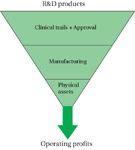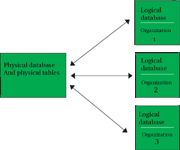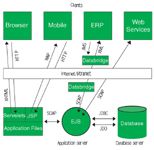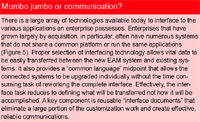Asset Management Tools for Minimizing Regulatory Risk and Maximizing Efficiency
Pharmaceutical Technology Europe
Resolving the asset headache - the author explains how effective asset management can enable pharmaceutical companies to boost operational profit, increase production uptime and adhere to regulatory standards.
In the continuing wave of industry consolidation, pharmaceutical companies have become managers of vast, globally dispersed, physical manufacturing assets. As an example, in 1999, Glaxo Wellcome's worldwide manufacturing and supply (WM&S) network employed nearly 21000 staff, with an annual operating expense of approximately £2 billion, embracing 54 facilities in 31 countries.1 By 2001, the merger with SmithKline Beecham and other acquisitions had pushed the number of facilities from 54 to more than 100.

There is also a continuing trend in manufacturing more complex drugs. An extreme case is Roche's HIV drug Fuzeon (previously named T-20). According to the company, Fuzeon has 44 ingredients and 106 manufacturing steps. (The average is 15 ingredients and 25-30 manufacturing steps). Imagine the number of potential process failure points and challenges to ensure that manufacturing and analytical assets perform to cGMP specifications for this biotech compound. Even individual manufacturing plants have significant challenges: medium-sized pharmaceutical sites make roughly 100-150 products using approximately 600-1000 analytical methods, and 100-200 items of manufacturing and analytical equipment.2

Meanwhile, the revenue produced by approved drugs inside their patent protection window can be immense. For example, for the year 2000, Pfizer set an industry record with one product (Lipitor) generating revenues of more than $5 billion; another product (Norvasc) generating revenues of more than $3 billion; Zoloft generating more than $2 billion; and Zithromax, Viagra, Neurontin, Celebrex and Diflucan generating revenues of more than $1 billion each.3 There are many revenue risks and opportunities associated with globally managing the performance and regulatory compliance of pharmaceutical manufacturing assets. Fortunately, enterprise asset management (EAM) tools address the specific needs of pharmaceutical manufacturers to meet regulatory requirements, and ensure operating efficiency and avoid production losses for approved products.

The profit funnel
The funnel (Figure 1) provides a simplistic view of pharmaceutical manufacturer operating profits (ignoring licensing). Products in research and development (R&D) or the approval phase — with intangible shareholder value — feed the funnel to produce operating profits. Indeed, all profits, in the end, are derived from manufactured products. Final operating profit is largely governed by the condition of physical assets (maintained performance and regulatory compliance). The condition and performance of physical assets is the final and most critical stage of the operating profit funnel.

Pharma EAM requirements
Fundamental EAM system requirements to provide global visibility and asset management functionality for all industry segments are
- web architected to minimize deployment time and costs
- multilingual
- multicurrency
- multiorganization to allow for variations in operating procedures
- tight, real-time integration with financial, manufacturing and legacy systems.
The pharmaceutical industry adds several specific requirements:
- Electronic record keeping to meet 21 CFR Part 11 specifications.
- Electronic signatures to meet Part 11 specifications.
- Integrated instrument calibration management.
- Tamper resistant database to meet Part 11 specifications.
- Full audit trail to meet Part 11 specifications.
Part 11 specifications (and worldwide equivalents) play a major role in pharmaceutical EAM. The significance is easily found by searching the warning letters detailed on the US Food and Drug Administration (FDA) website for the text "maintenance."4 Sample text from relevant letters produced by such a search include
- Failure to keep records for the maintenance, cleaning, sanitizing, and inspection of equipment used in pharmaceutical production (21 CFR 211.67(c)).
- Failure to establish adequate written procedures that discuss the cleaning and maintenance of equipment (21 CFR 211.67).
- Failure to maintain a written record of major equipment cleaning, maintenance and use (21 CFR 211.182).
Each letter ends with a statement of the implied risk to current operating profits: "You should take prompt action to correct these deviations. Failure to promptly correct these deviations may result in regulatory action without further notice. Such action includes licence suspension and/or revocation, seizure and/or injunction, and/or civil money penalties." A pharmaceutical EAM system must provide visibility and management of the global physical manufacturing assets to ensure operating profits are not threatened by regulatory non-compliance.

Figure 1 A funnel model of pharmaceutical manufacturers operating profits.
What is available today?
Imagine the executive responsible for ten production facilities owned by a large pharmaceutical company. Having 30 minutes in the airport lounge before the flight to a head office meeting, he/she accesses his/her "executive dashboard" on the Internet (Figure 2). It shows, at a glance, that production at a tablet plant in the US is jeopardized by maintenance issues. After a brief study of current key performance indicators (KPIs) for the plant, he/she quickly isolates the area of concern and calls the responsible manager. He/she is relieved to hear that a team is on top of the problem and it will be corrected before it affects production.

Figure 2 An "executive dashboard," as allowed by web deployment of an EAM system.
Not only does web deployment of the EAM solution provide the executive with on-the-spot global visibility of manufacturing assets, it also allows configuration of specific KPIs. This is accomplished with an in-built business rules writer. If, for example, the manufacturing chain for a key drug is dispersed across three sites — UK (active pharmaceutical ingredient [API] #1) to France (API #2) to US (tablet) — then a KPI that defines and monitors the risk of a production problem because of asset maintenance can be configured as

Figure 3 A multiorganization security, single physical database.
Note that the function can be configured as any desirable mathematical expression from simple weighted averages to complex polynomials. This allows the complicated task of managing the risk of manufacturing at the three dispersed sites to be reduced to viewing graphical KPIs, configured to display the information vital to production of the key drug. The executive dashboard and other features that give visibility to business critical KPIs are configurable per user. This means that each user has visibility to the KPIs specific to his/her role in the organization.
Group KPIs can also be defined to allow departments or users with similar roles in different business units to view relevant performance data and share common goals. Finally, KPIs can be defined for the entire enterprise. This gives management the opportunity to unite the organization with common goals visible to all.
The business benefits of this KPI visibility are delivered by proper selection of the web deployment technologies available today (see sidebars). A fundamental requirement to enable this type of enterprise KPI visibility is multiorganization capability. An in-built multiorganization security and data model allows the entire enterprise to be supported from a single, physical database while providing a separate, secure, logical database for each associated organization (Figure 3).

Figure 4 Architecture drawings can contain an array of acronyms and buzzwords.
This provides the cost saving benefits of deploying an enterprise solution from a single location while providing organization-specific data without complex, customized programming. By having a single database supporting the asset management effort, an enterprise can assemble consolidated views of manufacturing asset performance, maintenance effectiveness and costs while facilitating diverse maintenance and asset management programmes.

Figure 5 Growing enterprises have resulted in numerous systems that do not share a common platform or run the same applications.
Multiorganization capability combined with the flexibility of the user group concept provides
- Data security for each logical organization, ensuring that users from different organizations cannot influence data that does not belong to them (although they may be allowed to view it).
- Management visibility by which data across organizations may be viewed to analyse enterprise or divisional performance (but cannot be altered).
- Multicurrency, where each organization may have its home currency and individual organizations can operate with their own monetary environment.
- A systems' view whereby related costs and history can be consolidated across organizations.
Also inherent to multiorganization capability is
- Multilanguage whereby users access the same physical (or logical) database but interact with the system and maintain equipment descriptions and documents in local language.
- Multitime zone, which ensures actions and events that occur in different time zones are correctly time-stamped and displayed appropriately for the geography accessing the data.
Summary
The challenge of minimizing production risk and maximizing the operating efficiency of globally dispersed manufacturing assets is addressed by new EAM tools. These provide specific pharmaceutical functionality such as integrated instrument calibration, electronic record keeping and electronic signature for approval procedures.

Alphabet soup or a three course meal?
Using EAM tools to unify the asset management of a large global pharmaceutical operation provides the basis and leverage to improve asset performance and reduce production risk by sharing and standardizing best maintenance practices across the enterprise; ensuring regulatory compliance of the asset maintenance; and providing the procedures and record keeping required for cGMP specifications. Examples of the specific benefits realized from these installations include a 33% reduction in the number of standard calibration instructions, reducing training and simplifying maintenance operating procedures, and a 85% reduction in associated calibration forms, significantly reducing paperwork time. Corrective maintenance can be reduced by more than 80%, minimizing total maintenance labour and dramatically reducing the risk of non-compliant production from manufacturing asset maintenance. Production downtime is reduced by more than 30% to increase compliant, saleable production. These tools are available today and large pharmaceutical manufacturers are deploying them to realize the benefits.

Mumbo jumbo or communication?
References
1.
www.gartnerg2.com
2. www.iqa.org
4. www.fda.gov
